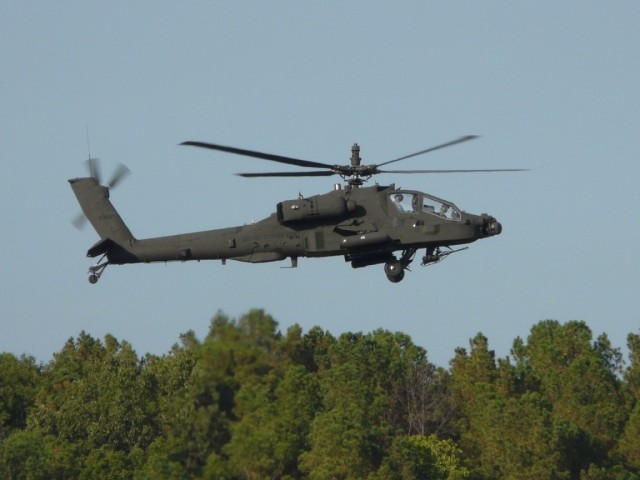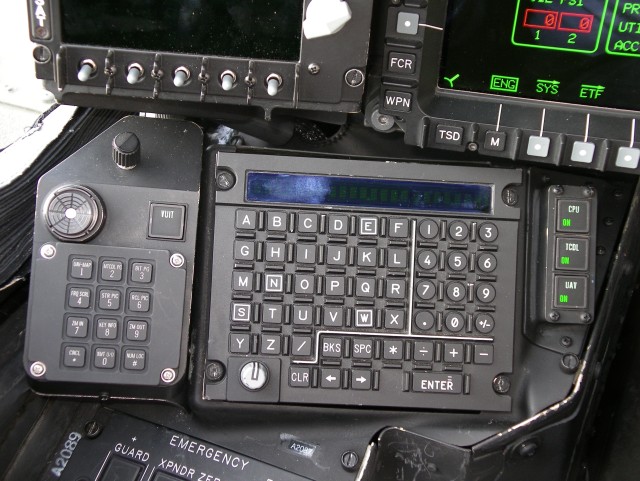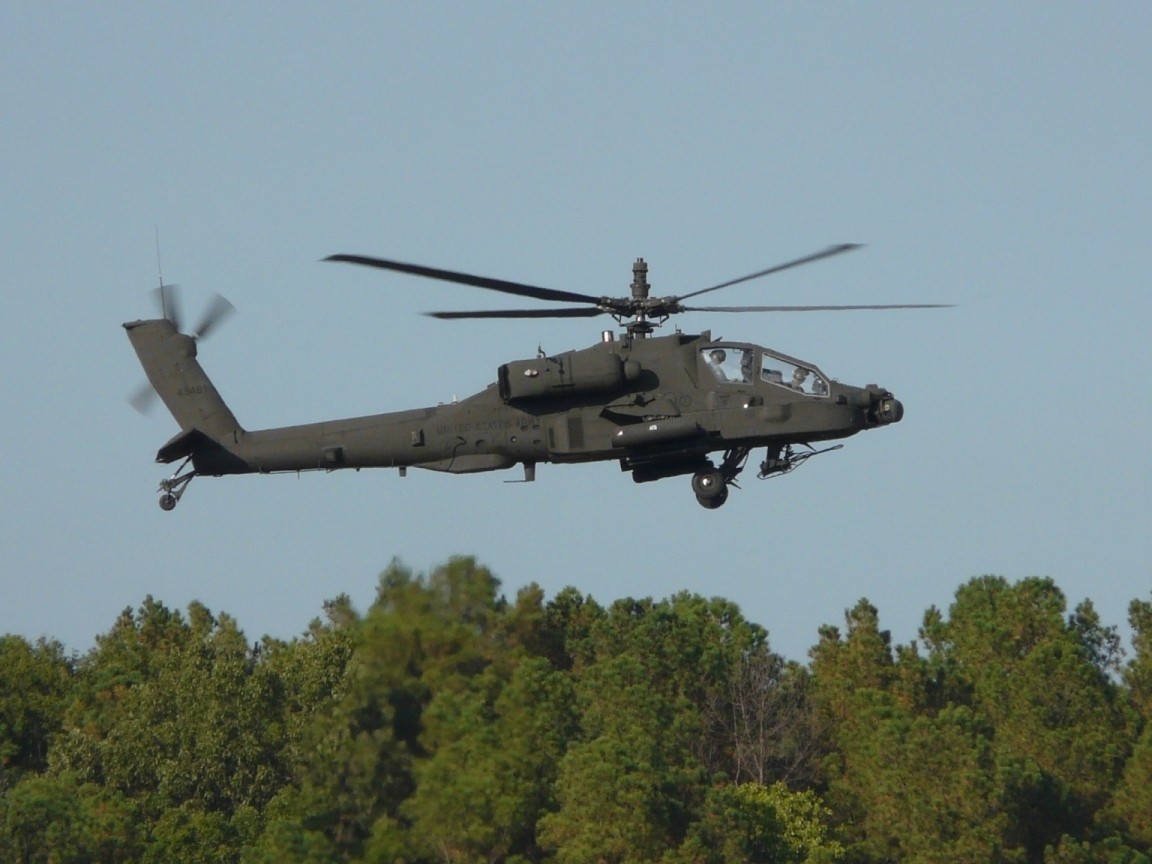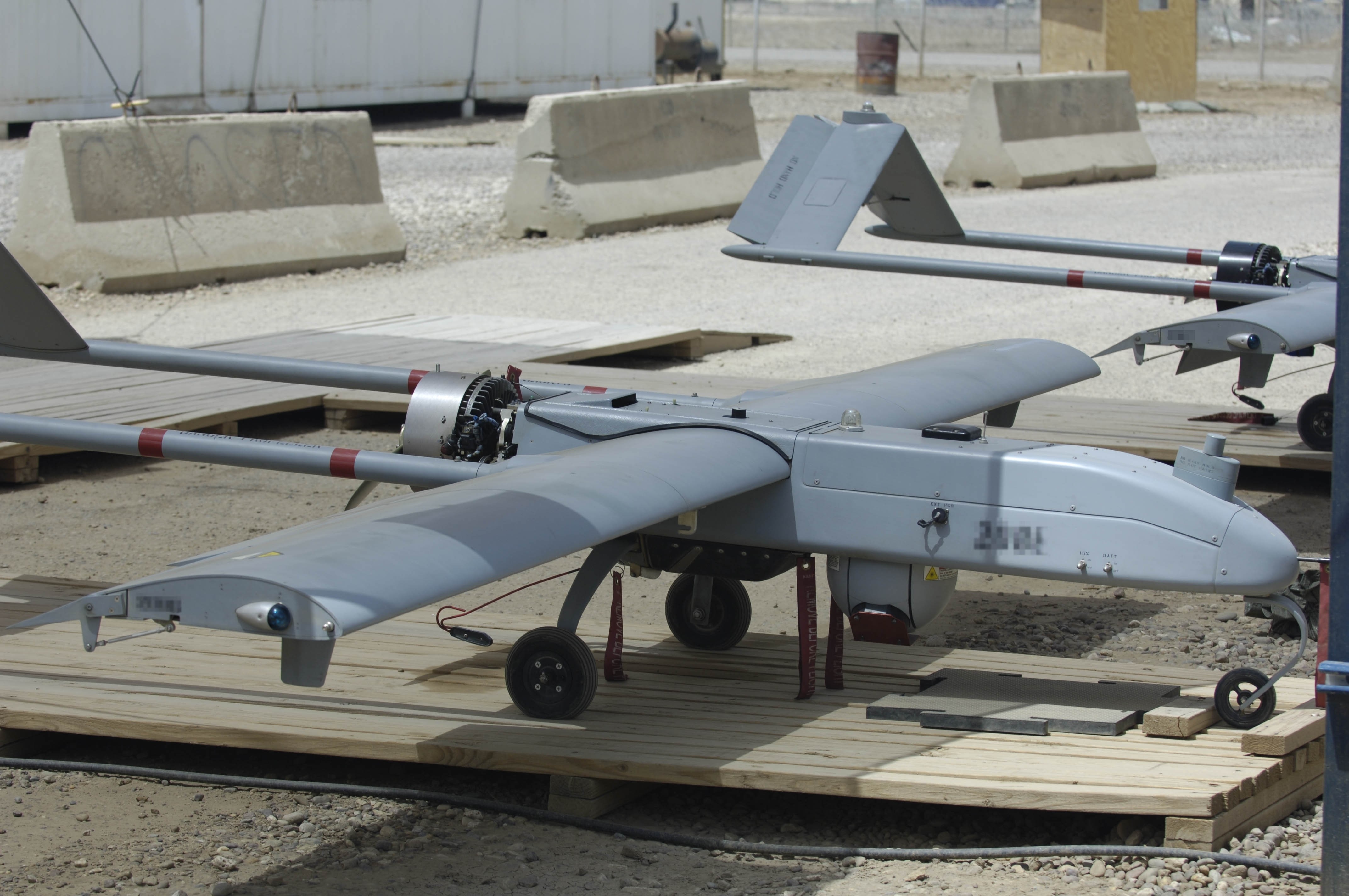FORT RUCKER, Ala. - Unmanned aircraft systems are giving Apache helicopter pilots a new war-fighting advantage.
Apache pilots can now receive video from unmanned systems for advance targeting information without entering harm's way. Demonstrated for the first time January 31 at the Army Aviation Senior Leaders Conference, this effort is part of a rapid acquisition program to increase interoperability.
Live footage from a Shadow Unmanned Aircraft System was streamed to the cockpit of an Apache helicopter through Video from UAS for Interoperability Teaming Level II or VUIT-2.
"This is a big step for manned-unmanned teaming," said Col. Derek Paquette, Apache project manager. "Ultimately, VUIT-2 will increase the survivability and lethality of the Apache Longbow aircraft by providing aircrews and ground commanders increased situational awareness, decreased sensor to shooter timelines and increased reaction time."
To ensure interoperability, the Apache PM has teamed with the UAS project manager and developed this capability using the One System Remote Video Terminal. With the OSRVT as the baseline interface, VUIT-2 is able to receive video from nearly all unmanned aircraft systems operating in Iraq and Afghanistan. It also provides joint interoperability by giving Apache Longbows the ability to receive Air Force and Navy video from platforms such as the F-15, F-16, F-18 using Sniper or Lightning Pods.
"The U.S. Army Soldier is adaptive and maximizes the tools he has such as UAS, but it is up to the Acquisition Corps to provide materiel solutions that make that job easier and more effective," Paquette said.
Currently, manned-unmanned teaming in Apaches relies on radio transmissions from the UAS operator to describe a target of interest. Now with the advent of VUIT-2, the Apache pilot can quickly visualize, assess the situation, and prepare for target engagements before he is even in weapons or Modernized-Target Acquisition Designator System range. UAS video is displayed in the cockpit on the Apache Longbow's Multi-Purpose Display, and Apache Longbow sensor video can be transmitted to Soldiers on the ground.
"This gives the Apache helicopter a huge advantage and the ability to work well within the enemy's decision and reaction time," Paquette said. "Before the enemy even hears the Longbow, the crew has utilized VUIT-2 to gain situational awareness and identify the target. The crew then obtains clearance for fires and maneuvers to attack the target, all the while maintaining eyes on it using VUIT-2, and then launches a lethal barrage of weapons that will eliminate the target."
VUIT-2 capabilities will be fielded to theater by this summer and is approved for nine Longbow Apache battalions during fiscal years 2008 and '09.
From concept to fielding, VUIT-2 has been developed in less than a year. In addition to the Apache and UAS project offices, the Aviation Applied Technology Directorate, Aviation Engineering Directorate, Aviation Technical Test Center, Redstone Technical Test Center, Army Test and Evaluation Command, and industry partners have all played vital roles in rapidly transitioning this technology to the warfighter.






Social Sharing